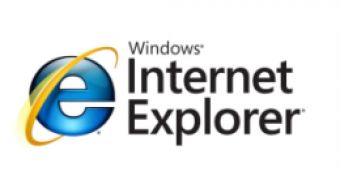Windows 7 is not the only software product benefiting from a strong focus on accessibility, as far as Microsoft is concerned. The next iteration of Internet Explorer will bring to the table both graphical user interface and platform enhancements designed to make IE8 the most accessible browser on the market, according to the software company. JP Gonzalez-Castellan, the accessibility program manager for IE8, revealed that all the users of the browser would ultimately benefit from the evolution of accessibility features, as improvements in terms of usability would be inherent.
Under-the-hood, the evolution of accessibility features in EI8 compared to IE7 involves the addition of support for ARIA, support for IAccessibleEx, and support for additional WinEvents. “IE8 recognizes the ARIA role, state, and property information, and exposes it to ATs, which in turn can use the Microsoft Active Accessibility (MSAA) and/or Microsoft UI Automation implementations to retrieve the information,” Gonzalez-Castellan stated.
“The IAccessibleEx interface extends IE8’s MSAA implementation, and allows richer information to be exposed and retrieved using Microsoft UI Automation properties and control patterns,” Gonzalez-Castellan added. “Due to the ever increasing dynamic nature of webpages, we’ve added support for new WinEvents to notify ATs when the content of a page changes dynamically. This way ATs can keep their users more in sync with the state of the page they are browsing.”
On the surface of Internet Explorer 8, Microsoft has delivered a range of new graphical user interface features, which will make the browsing process easier for people with mobility and visual disabilities. In this regard, Microsoft enumerated Caret Browsing, Find on Page, Adaptive Zoom, High DPI, but also the Accelerators as some of the features set up to take accessibility to the next level. Caret Browsing, which can be turned on and off via F7, will offer the possibility to navigate webpages via a cursor that can be controlled with the keyboard and not by means of the mouse.
At the same time, Adaptive Zoom and High DPI will facilitate navigation for visually impaired users through an enlarged UI. Still, enlarging the user interface is simply just one aspect, as in addition Microsoft also offers Adaptive Zoom, while tailoring the content to the canvas available by redrawing the page and scrapping horizontal scroll bars.
“We’ve made key Accessibility investments, both in the UI and the platform during the IE8 development cycle. If you are an end-user that doesn’t use ATs, you probably discovered a couple of new features that will come handy. You can now try those features you had heard about but didn’t know you could benefit from using them - like browsing the web from your couch using the Adaptive Zoom at 150%, or browsing in High Contrast mode to keep your eyes more relaxed, or using Caret Browsing to access Accelerators entirely through the keyboard. If you use ATs to browse the web, then we also encourage you to try IE8 out and share your experiences with us,” Gonzalez-Castellan stated.
Internet Explorer 8 (IE8) Beta 2 is available for download here.

 14 DAY TRIAL //
14 DAY TRIAL //